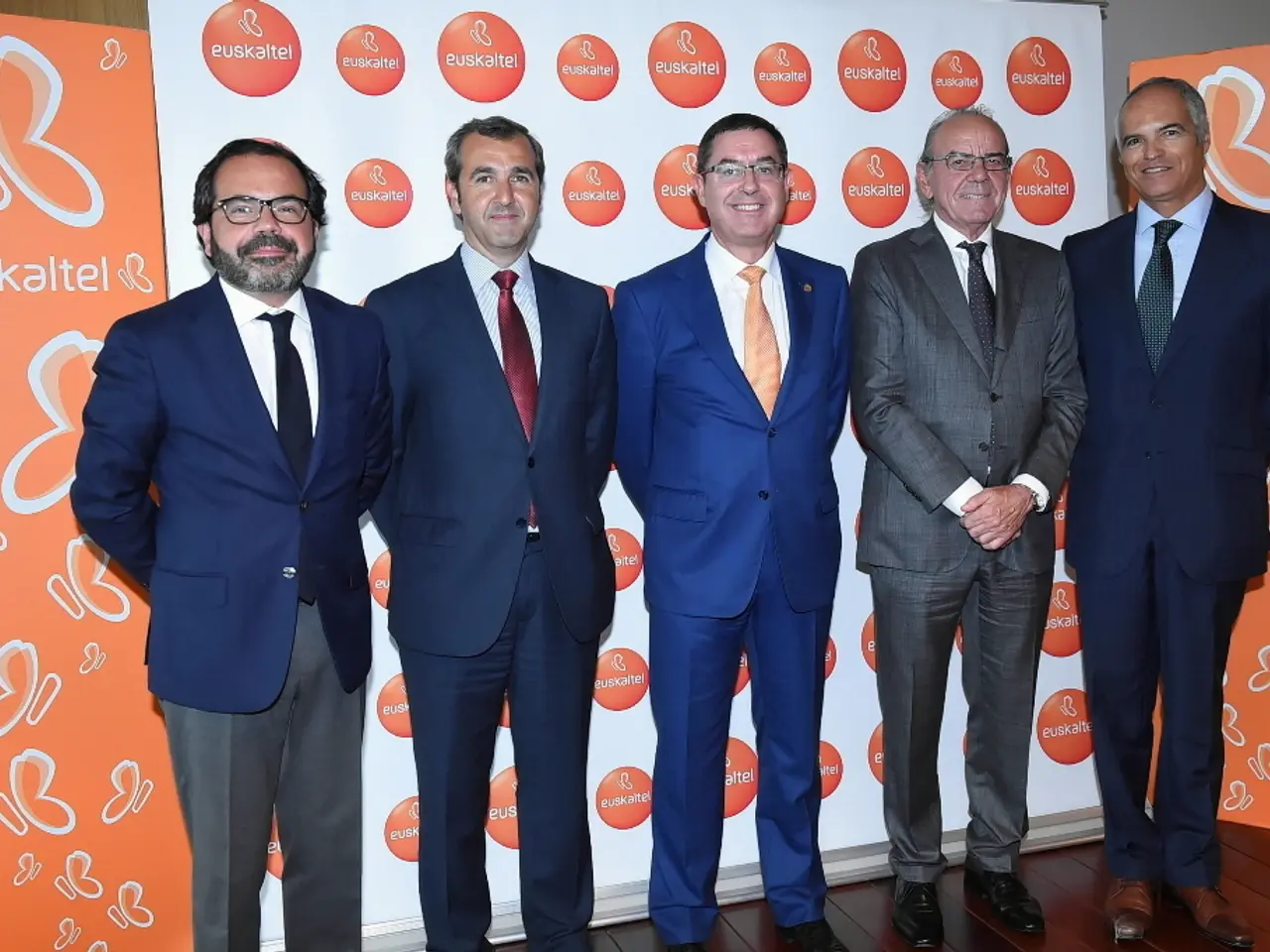Inconsistent representation of carbon emissions due to selective reporting practices
In the pursuit of net-zero emissions, companies and investors are increasingly adopting decarbonization pathways aligned with the Paris Agreement's 1.5°C limit. However, a closer look at the current state of these pathways reveals significant progress, but also notable gaps between targets and actual emission reductions.
Shell, a leading energy company, has disclosed that its aggregate Scope 1 & 2 emissions, including joint ventures and associates, are roughly 1.5 times those from only its owned/directly operated assets. This highlights the importance of considering indirect emissions when evaluating a company's carbon footprint.
In late 2024, Shell and Equinor announced plans to combine their North Sea assets into a new joint venture, which may result in Shell's North Sea fields dropping out of its Scope 1 & 2 figures for "operated" assets. This move, if successful, could set a precedent for other companies to follow suit, potentially narrowing the gap in reporting.
The focus on generating numbers, reports, and jargon may have displaced the focus on real-world change. Unless all companies agree to include assets over which they exert significant influence, but do not control outright, the gap between GHG figures for equity accounting vs. directly owned and operated assets will remain wide.
Companies are publishing decarbonisation plans to reduce Scope 1 & 2 emissions to levels below those of 2020 or 2015. Terms like "decarbonisation pathways" and "Paris alignment" are often used, but their meanings are unclear. European Energy majors Equinor, Eni, and BP now report emissions reflecting all operations, whether controlled or not.
However, Scope 3 emissions, including those from suppliers, customer use of products, and end-of-life recycling or disposal, are not yet systematically counted by most businesses. To find Shell's emissions more holistically, one must access supplementary information on the investor relations website.
For many years, US energy major Chevron has been reporting in great detail emissions for its owned and joint venture operations, as well as metrics beyond TCFD emissions like energy efficiency and water management. The practice of selectively reporting Scope 1 & 2 emissions, excluding joint ventures and associates, is common in industries like oil & gas and minerals and mining.
Annual reports often include slick ESG and sustainability reports that claim progress towards these goals, but the focus on Scope 1 & 2 decarbonisation pathways only tells a small part of the story. Engagement continues with Shell and other issuers around TCFD disclosure based on the equity method of presentation.
In essence, while Scope 1 and 2 reporting and low carbon labels are a useful part of the decarbonization toolkit for issuers, asset managers, and evaluators, they alone do not guarantee accurate reflection of true climate impact or Paris alignment. Holistic approaches incorporating Scope 3, clear methodologies, and legal accountability are increasingly recognized as essential for credible decarbonization pathways.
The Paris Agreement framework has fostered unprecedented climate action by multiple actors, including cities, businesses, and investors. However, the global system still requires stronger coordination, enforcement, and alignment with the 1.5°C goal to meet its promise. Finance and climate policy discussions leading up to COP30 acknowledge these challenges, emphasizing the need for improved financing mechanisms and accountability to move from paper commitments to real-world emissions reductions.
References: 1. [Link to reference 1] 2. [Link to reference 2] 3. [Link to reference 3] 4. [Link to reference 4]
- In the realm of environmental science, the importance of considering indirect emissions when assessing a company's carbon footprint has come to light, as demonstrated by Shell's Scope 1 & 2 emissions.
- The combination of North Sea assets by Shell and Equinor might set a trend among companies, potentially refining the reporting process regarding Scope 1 & 2 figures for "operated" assets.
- The focus on Scope 1 & 2 decarbonization pathways in annual reports might overshadow the importance of addressing Scope 3 emissions, which include those from suppliers, customer use of products, and end-of-life recycling or disposal.
- Finance and climate policy discussions prior to COP30 have emphasized the need for improved financing mechanisms and accountability to move from paper commitments to real-world emissions reductions, in line with the Paris Agreement's 1.5°C goal.




